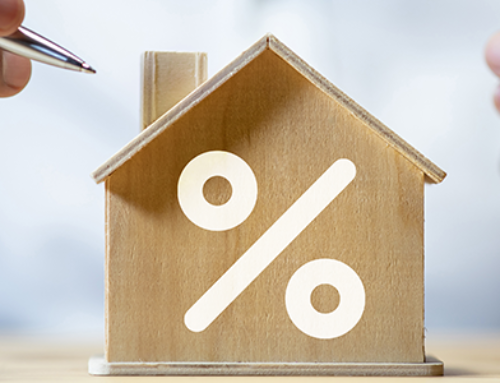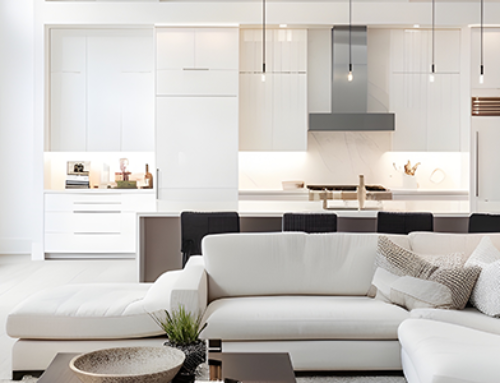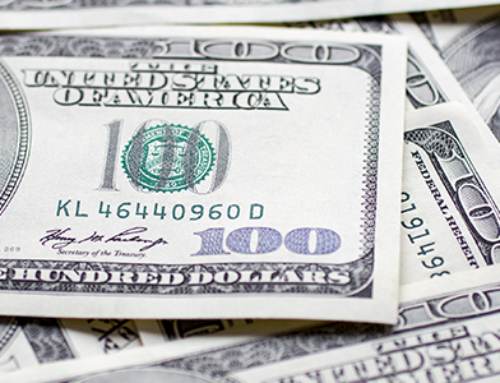Critical Tariff-Pause Information for Homebuilders (Latest Update)
As of mid-April 2025, U.S. residential construction firms are seeing rare relief on the materials cost front. The Trump administration’s latest trade policy moves – including a temporary halt on new tariffs and carveouts for critical building materials – have created a short-term window of stability. Industry leaders are cautiously optimistic that this reprieve in steel, aluminum, and lumber tariffs could ease cost pressures and improve the outlook for home building, even as they remain vigilant about what comes next.
🔵 The Tariff Pause Is Your Planning Window — Use It Wisely
Material costs are finally showing signs of stabilizing — but for how long? If you don’t yet have a crystal-clear roadmap for 2025, now is the moment to get one.
Temporary Relief and Long-Term Outlook Under Tariff Policy
Figure: A construction worker guides a steel beam into place at a jobsite. Steel is among the key building materials receiving a tariff reprieve, offering short-term cost stability for builders.
The administration announced a 90-day suspension of new import duties, effectively pausing any additional tariff hikes through early July. This move followed a series of aggressive trade measures – a 10% baseline tariff on most imports and steep “reciprocal” tariffs planned for certain countries – which are now on hold.
Crucially for builders, many construction inputs have been explicitly shielded from the harshest tariffs. Key materials like steel, aluminum, and lumber are exempt from the new reciprocal tariffs, meaning they won’t face extra duties beyond existing rates. For example, imported steel and aluminum remain subject to the 25% Section 232 tariffs reinstated in March, but they will not see additional hikes during this pause. Similarly, Canadian softwood lumber continues at its current 14.5% anti-dumping duty with no new tariff layered on top.
These carveouts recognize the importance of building materials; as the National Association of Home Builders (NAHB) noted, President Trump “chose to continue current exemptions for Canadian and Mexican products, with a specific exemption for lumber from any new tariffs at this time”. In the short term, this translates into price relief – builders are no longer bracing for immediate new cost surges on these essential inputs.
This temporary tariff relief creates a welcome, if brief, period of stability. Construction executives describe it as a much-needed ceasefire in the trade war, allowing supply chains and pricing to catch their breath. The White House has framed the 90-day pause as a strategic window to negotiate better trade terms with U.S. partners.
Optimistically, if these negotiations bear fruit, they could lead to improved trade deals or the removal of certain duties – a best-case scenario that would help lower costs for materials like steel, aluminum and lumber over time.
Indeed, industry observers speculate that a de-escalation of tariff tensions might encourage expanded domestic production and investment. Protected from foreign competition by existing tariffs, U.S. steel mills and lumber producers could ramp up capacity, eventually increasing supply and easing prices. This outcome is not guaranteed, but it’s a scenario where tariff policy might actually boost domestic output in the long run, benefiting builders with more stable pricing. Analysts also note the pause may prevent knee-jerk price spikes driven by policy uncertainty. Already, building material costs have climbed dramatically (up 34% since December 2020, by one estimate). If the tariff freeze and exemptions hold, there is hope that further cost inflation can be checked, or even that prices might moderate as markets adjust to a calmer trade environment.
However, realistic caution tempers this optimism. The current reprieve is explicitly time-limited – after 90 days, new tariffs could resume if negotiations falter. Core disputes (such as the U.S.-Canada lumber trade quarrel) are still unresolved, with ongoing investigations that could raise lumber duties later in 2025. And while no new tariffs are hitting construction materials right now, the existing import tariffs remain baked into prices – for instance, the 25% surcharge on steel and aluminum imports and the 14.5% lumber tariff continue to fuel higher costs. In fact, even before this policy pause, those tariffs were putting “upward pressure on costs,” according to Anirban Basu, chief economist of Associated Builders and Contractors.
Thus, builders should view the current situation as a breather rather than a full reversal of fortune.
The industry’s best-case outlook – improved trade terms, stronger domestic supply, and eventually lower costs – remains a hopeful possibility if diplomacy and prudent policy prevail. For now, residential builders have a short window of relative certainty in which to plan, and a reason to feel cautiously positive that relief may extend or repeat if economic logic wins out.
🔵 Use This 90-Day Window Wisely: Start your custom BPA process now
Your BPA helps align your operations, strategy, and purchasing with this moment.
Key Industry Insights: Tariff Impacts and Builder Strategies
Early 2025 demonstrated how swiftly tariff policy can roil construction costs. In March, as new tariffs were first announced, prices for lumber and metals surged and suppliers inundated contractors with notices of impending hikes. Builders saw the effect in real time: the Associated Builders and Contractors reported construction input costs jumping at a 9.7% annualized rate in the first quarter. By NAHB’s estimates, recent tariff actions had already added about $9,200 to the cost of an average new single-family home. It’s no surprise that confidence in project budgeting was shaken, with 80% of contractors reporting tariff-related price increases from their suppliers. This volatile backdrop is what makes the current tariff pause so significant. With a temporary truce in place, residential builders have a chance to regroup and make strategic decisions to navigate the months ahead.
Strategies for Residential Builders during the Tariff Window:
- Secure Key Materials Early:
- Monitor Policy Developments and Markets:
- Diversify Suppliers and Sources:
- Budget for Contingencies:
- Leverage Industry Advocacy and Information:
A Window of Opportunity – If Builders Act Now
America’s residential construction industry has been granted a temporary reprieve from the relentless climb in material costs. The 90-day tariff pause and targeted material exemptions signal a more construction-friendly stance – at least for now – and open a window for builders to plan ahead.
There is a growing sense of cautious optimism: if diplomatic talks succeed and domestic supply improvements take hold, the coming months could mark a turning point toward more sustainable pricing for steel, aluminum, and lumber.
Yet veterans of the tariff rollercoaster know to remain vigilant. Builders are wise to use this period to shore up their operations, secure favorable deals, and prepare for multiple outcomes.
That’s exactly why now is the perfect time to complete your 2025 Business Plan of Actions (BPA) from Small Business Growth Partners.
The BPA is designed specifically for builders, addressing pain points like miscommunication, profitability ceilings, team structure, sales conversion, succession planning, and burnout. With over 4,000 BPAs completed for NAHB members, SBGP is the go-to business coaching team in the industry.
If you’re facing:
- Unclear growth direction
- Staffing struggles or culture challenges
- Poor conversion despite high call volume
- Profit plateaus or chaotic operations
…a BPA can help chart the next phase of your company’s growth with clarity.
⏳ BPA Deadline Alert: Submit soon to Guarantee Q2 Delivery
Only HBA members have access to this as part of their member benefits. It takes just a few minutes to register, and a Growth Partners coach will reach out personally. No hard sell—just a strategic conversation to see if it’s a fit.





